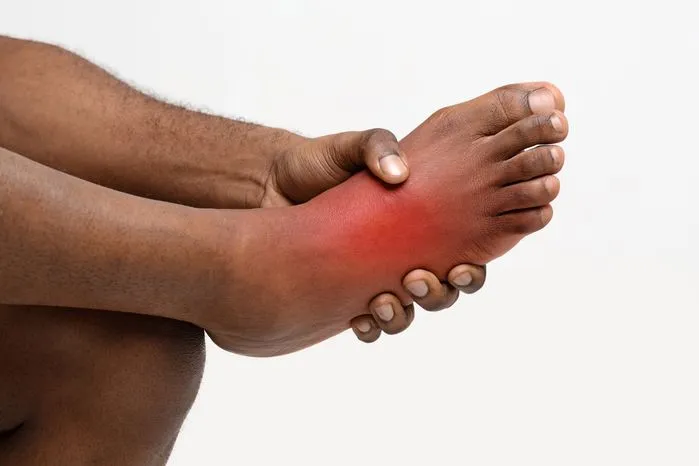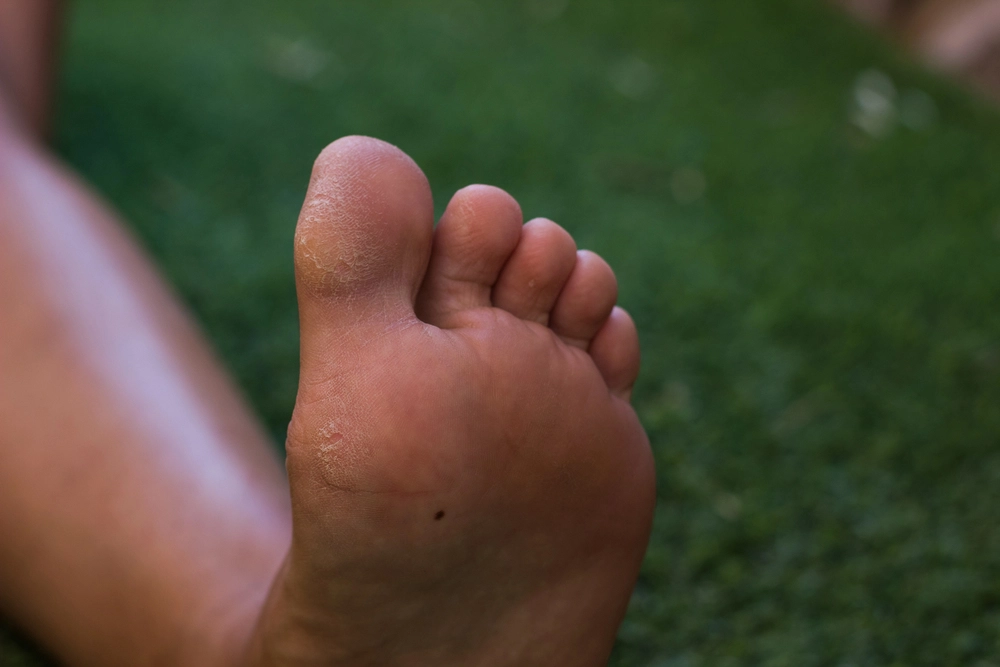
The Releford Institute’s Opinion on Chiropodist vs. Podiatrist
In our opinion, the difference between a chiropodist and a podiatrist can be a bit confusing, but it’s important to understand when you’re looking for foot care. Both treat foot conditions, but “chiropodist” is mainly used in the UK and Canada, while “podiatrist” is the term we use here in the U.S. The biggest difference is that podiatrists in the U.S. usually have more advanced training, including surgical expertise.
At the Releford Institute, our podiatrists are trained to handle everything from basic care to more complex foot issues. From our experience, what matters is finding someone qualified who makes you feel comfortable, regardless of the title they use.
Key Takeaways
- Chiropodists are specialists in their field. On the other hand, podiatrists cover broader conditions, some requiring surgical procedures.
- Podiatrists receive more intensive training with a bachelor's degree, a four-year DPM degree, plus a compulsory three-year hospital residency.
- Minor surgeries are performed by both chiropodists and podiatrists. They also educate patients on maintaining foot health. However, only the latter are legally allowed to give prescription medication.
- Consider seeing a chiropodist for routine foot care.
- Consider visiting a podiatrist if your condition requires surgery or another related case.

Qualifications and Services of Chiropodists
If you're exploring foot health, you might stumble upon the term 'chiropodist'. Not your typical everyday word unless, of course, foot care is your daily bread.
They diagnose and treat foot and lower limb issues. They handle concerns from ingrown toenails, fungal infections, calluses, and bunions.
They assess patients, devise treatment plans, and then educate them about the field.
Podiatrists: Education and Practice Scope
In the 20th century, the term chiropodist was considered antiquated, thus the term podiatrist was more accepted.
It is among the challenging specializations in the medical industry. These doctors who get a license undergo challenging education and experience. First, you need a bachelor's degree. Then, a four-year DPM (Doctor of Podiatric Medicine) degree from a podiatry school. You also need at least three years of hospital residency.
Key Differences Between Chiropodists and Podiatrists
Consider the historical context. Chiropody initially handled minor foot ailments. Podiatry came into the picture later, extending its reach to a broader range of foot and lower limb conditions. Hence, podiatrists usually undergo extensive training.
Next, location matters too. People from the UK use 'chiropodist' and 'podiatrist' interchangeably. However, 'chiropodist' is an old term, and 'podiatrist' is more common terminology in the US.
Their scope of practice isn't the same. Podiatrists diagnose and treat numerous foot conditions, perform surgeries, and prescribe medications. Chiropodists, however, focus on preventative care and minor foot treatments.
Common Ground: Similarities in Foot Care Services
These specialists both help patients with health issues concerning their foot and lower limb health. They differ in many ways, as previously mentioned. However, there are some similarities in their field.
These professionals diagnose and treat foot conditions. They act like detectives in foot health, spotting issues before they become painful. Minor surgeries? They perform those too!
They equip you with all the knowledge necessary for maintaining healthy feet. They educate their patients about foot hygiene, suitable footwear, and prevention of common foot problems. Consider them your personal foot health librarians, always ready to impart their wisdom.
Choosing the Right Professional for Foot Care
Don’t be overwhelmed by foot care specialization. No worries; you're not on this journey alone. Understand your foot health and available treatment options to make the right choice.
Start by figuring out what's wrong with your feet. Do they hurt all the time, frequently, or due to some recent accident? Chiropodists are your first point of contact for common foot problems. They specialize in routine foot care. Do you have pesky corn or callus that needs quick sorting out? Trust them to handle it.
However, consider seeing a podiatrist if your foot issue is more serious or needs surgery. They perform foot and ankle surgeries and manage serious conditions such as problems related to diabetes.
Frequently Asked Questions
Is it better to see a podiatrist or chiropodist?
Whether to see a podiatrist or a chiropodist depends on your needs and preferences, as both are experts in foot care, with the terms often used interchangeably in many countries. They help patients with ingrown toenails, bunions, and heel pain to more complex issues like flat feet, foot injuries, or complications from diabetes.
Why are chiropodists now called podiatrists?
Chiropodists are now podiatrists because the term podiatrist is more commonly recognized internationally and is the standard term for foot specialists in many parts of the world. The change in terminology also reflects a shift in the profession's focus and scope of work. Podiatrists are medical professionals who diagnose and treat conditions of the foot, ankle, and related structures of the leg, which can include surgical interventions and managing conditions related to diabetes or cardiovascular disease.
What exactly does a chiropodist do?
A chiropodist, also known as a podiatrist, specializes in diagnosing and treating conditions of the foot, ankle, and related structures of the leg. They treat patients with bunions, heel pain, spurs, hammertoes, neuromas, ingrown nails, warts, corns, and calluses.
Why do people go to a chiropodist?
People usually go to a chiropodist if they have foot-related problems such as bunions, corns, calluses, ingrown toenails, foot infections, or need advice on foot care and footwear. Chiropodists also provide treatment for sports injuries, biomechanical issues, and foot deformities.
Can a chiropodist prescribe antibiotics?
A chiropodist, in many jurisdictions, is authorized to prescribe antibiotics for infections related to the foot, but it depends on the specific regulations and licensing rules in their region. Chiropodists prescribe certain types of antibiotics after obtaining a supplementary prescriber qualification.
Do podiatrists amputate toes?
Podiatrists are medically trained to perform foot and ankle surgeries, including toe amputations, but this is usually the last resort when other treatments have failed. They also provide advice and treatment for patients dealing with chronic foot conditions, such as bunions and plantar fasciitis.
Is it worth seeing a chiropodist?
Seeing a chiropodist is worth it if you're experiencing foot discomfort or pain or have a specific foot condition, as they are professionals trained in diagnosing and treating a variety of foot-related ailments. They educate patients about proper foot care and recommend suitable footwear to prevent further issues.
Do chiropodists deal with nail fungus?
They diagnose and treat a variety of skin and nail conditions, including nail fungus. They advise patients on foot hygiene and footwear to prevent future issues. They also conduct minor surgeries to remove ingrown toenails or plantar warts.
How does a chiropodist remove a toenail?
A chiropodist removes a toenail through a surgical procedure known as toenail avulsion. It involves numbing the toe with local anesthesia before nail removal. Cleaning them helps prevent infection. Scheduled follow-ups help monitor the healing process and ensure regrowth of the nail.
Do I need to be referred to a chiropodist?
Whether you need a referral to see a chiropodist depends on your healthcare system and insurance plan, but in many cases, you can self-refer to a chiropodist. Consider directly making an appointment with them without needing a recommendation from a general practitioner. However, it's always best to check with your healthcare provider or insurance company to understand your coverage and any potential out-of-pocket costs.
Which Part of the human body does chiropody deal with?
Chiropody deals with the foot and lower limb, specializing in the diagnosis and treatment of diseases and disorders of these parts of the human body. They provide relief from foot pain, treat infections, and suggest preventative measures to maintain overall foot health.
Does a chiropodist do pedicures?
While a chiropodist may perform some tasks similar to a pedicure, such as removing calluses and treating nail problems, their role is more medically oriented and they do not typically perform cosmetic pedicures. They diagnose and treat foot disorders and often work in healthcare settings or private clinics. Chiropodists also provide advice on foot health and preventative care to avoid future problems.


















